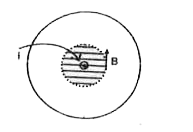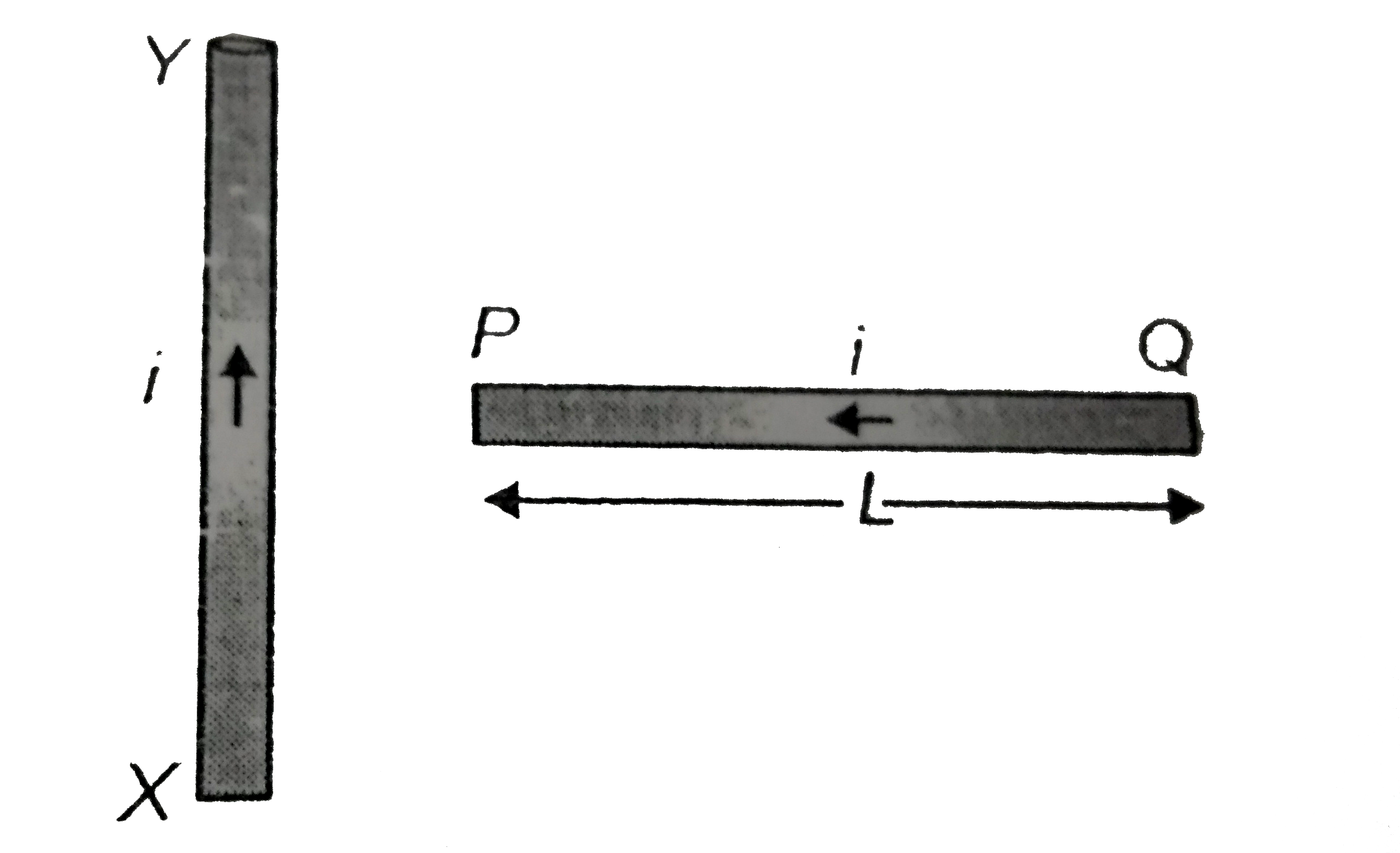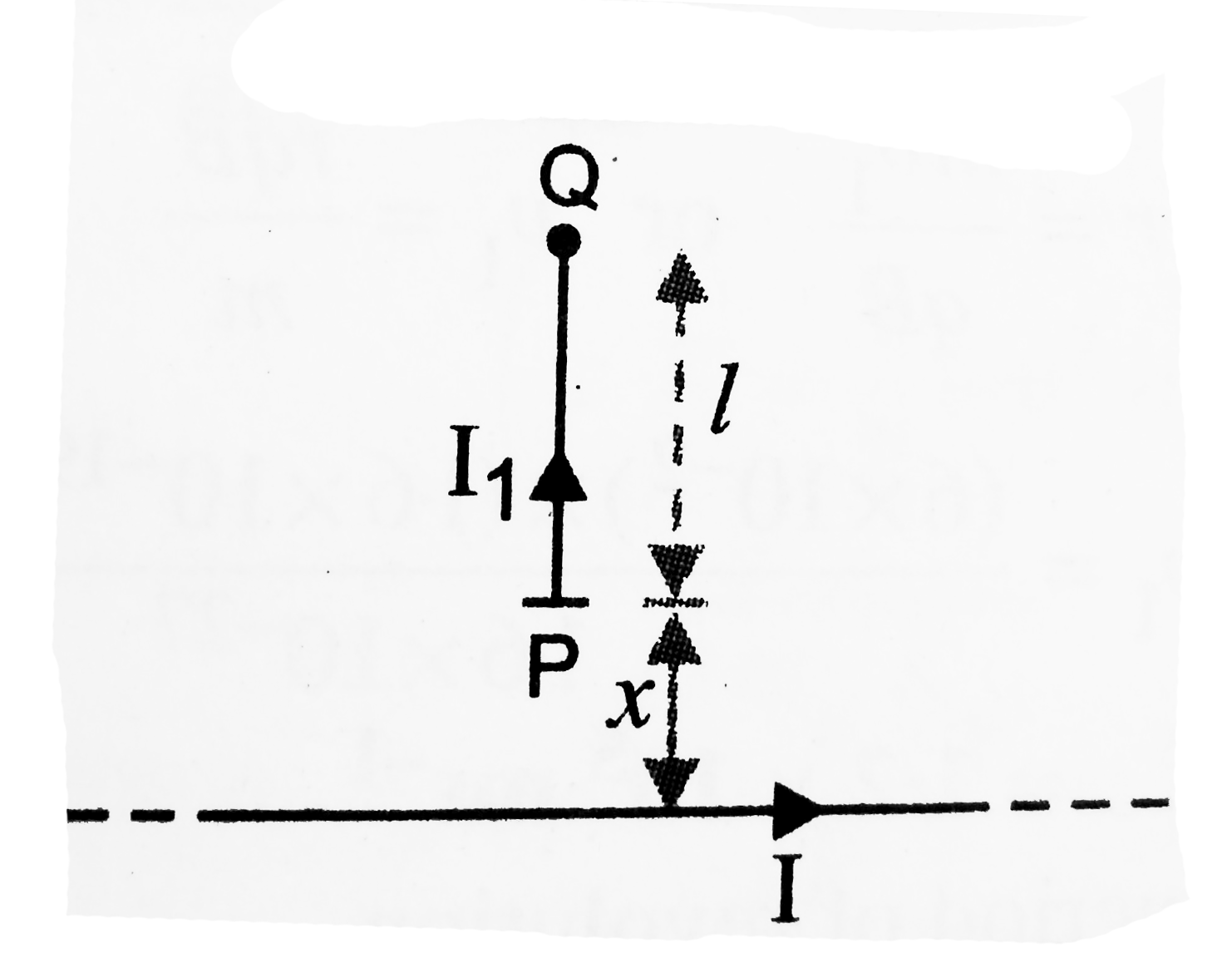How will the conductor, carrying current I0 rotate immediately after it is released in following three cases [consider magnetic force only]
(a) Conductor carrying current I0 is placed symmetrically above poles of a fixed U shaped magnet (figure a).
(b) Conductor carrying current I0 is placed symmetrically at a distance from a fixed current (I1) carrying wire (fig. (b))
(c) An insulated circular current carrying wire is held fixed in vertical plane. Conductor carrying current I0 is in the shape of a circle of diameter nearly equal to that of the fixed insulated circle. The planes of the two circles are perpendicular to each other (fig. (c)) with xy as common diameter
![How will the conductor, carrying current I(0) rotate immediately after it is released in following three cases [consider magnetic force only] (a) Conductor carrying current I(0) is placed symmetrically above poles of a fixed U shaped magnet (figure a). (b) Conductor carrying current I0 is placed symmetrically at a distance from a fixed current (I(1)) carrying wire (fig. (b)) (c) An insulated circular current carrying wire is held fixed in vertical plane. Conductor carrying current I(0) is in the shape of a circle of diameter nearly equal to that of the fixed insulated circle. The planes of the two circles are perpendicular to each other (fig. (c)) with xy as common diameter](https://d10lpgp6xz60nq.cloudfront.net/physics_images/IJA_PHY_V02_C10_E01_017_Q01.png)

Text Solution
The correct Answer is:(a) Conductor will rotate in Horizontal plane (b) Conductor will rotate so as to get parallel to fixed wire (c) Circular conductor will rotate so as to set the current (I0) parallel to (I1)
|
Topper's Solved these Questions
Similar Questions
Knowledge Check
Shown in the figure is a conductor carrying a current i. the magnetic field at the origin is :
 Aμ0i4r(ˆiπ+ˆj2)B−μ0i4r(ˆiπ+ˆk2)Cμ0i4r(ˆi2+ˆiπ)Dμ0i4r(2ˆiπ+ˆj)
Aμ0i4r(ˆiπ+ˆj2)B−μ0i4r(ˆiπ+ˆk2)Cμ0i4r(ˆi2+ˆiπ)Dμ0i4r(2ˆiπ+ˆj)When a current carrying conductor is placed in magnetic field, then:
AIt always experience a forceBIt may experience a forceCIt never experience a forceDNone of the above
Shown in the figure is a conductor carrying a current i. the magnetic field at the origin is :

View SolutionSolenoid|Magnetic Force on Current Carrying Conductor
View SolutionA long solid cylindrical straight conductor carries a current i0 . Find the magnetic energy stored per meter inside it.

View SolutionA conductor PQ, carrying a current i is placed perpendicular to a long conductor xy carrying a current i. The direction of force on PQ will be

View SolutionA conductor PQ, carrying a current i is placed perpendicular to a long conductor xy carrying a current i. The direction of force on PQ will be

View SolutionThe magnetic field in a straight current carrying conductor wire is:
View Solution

